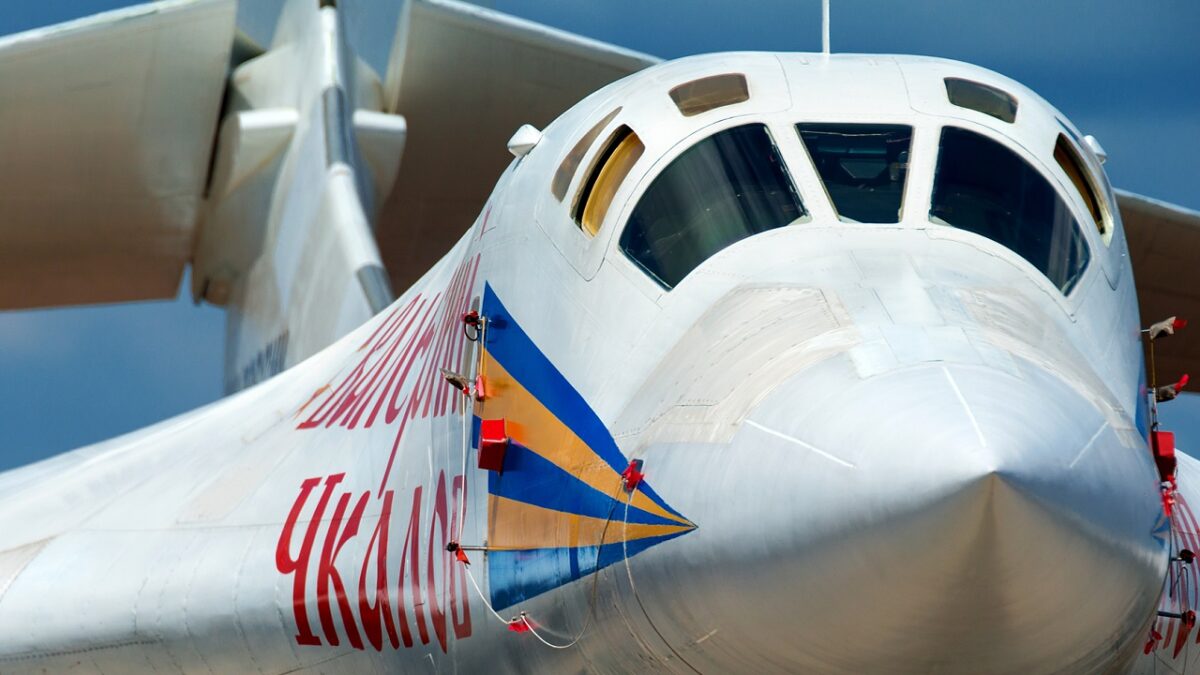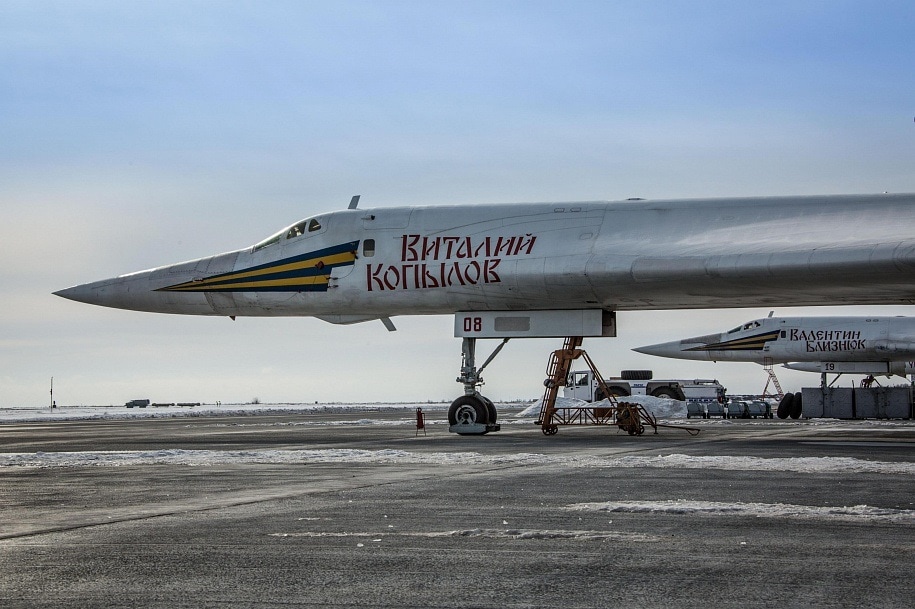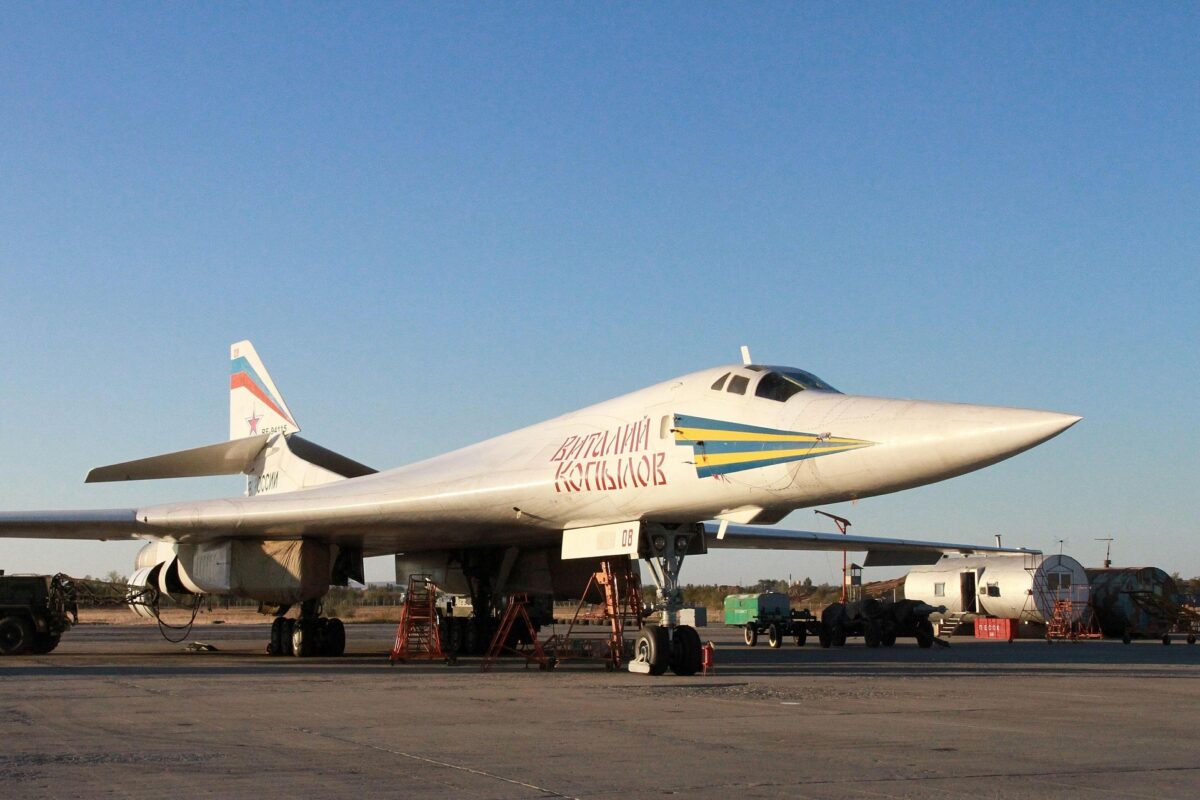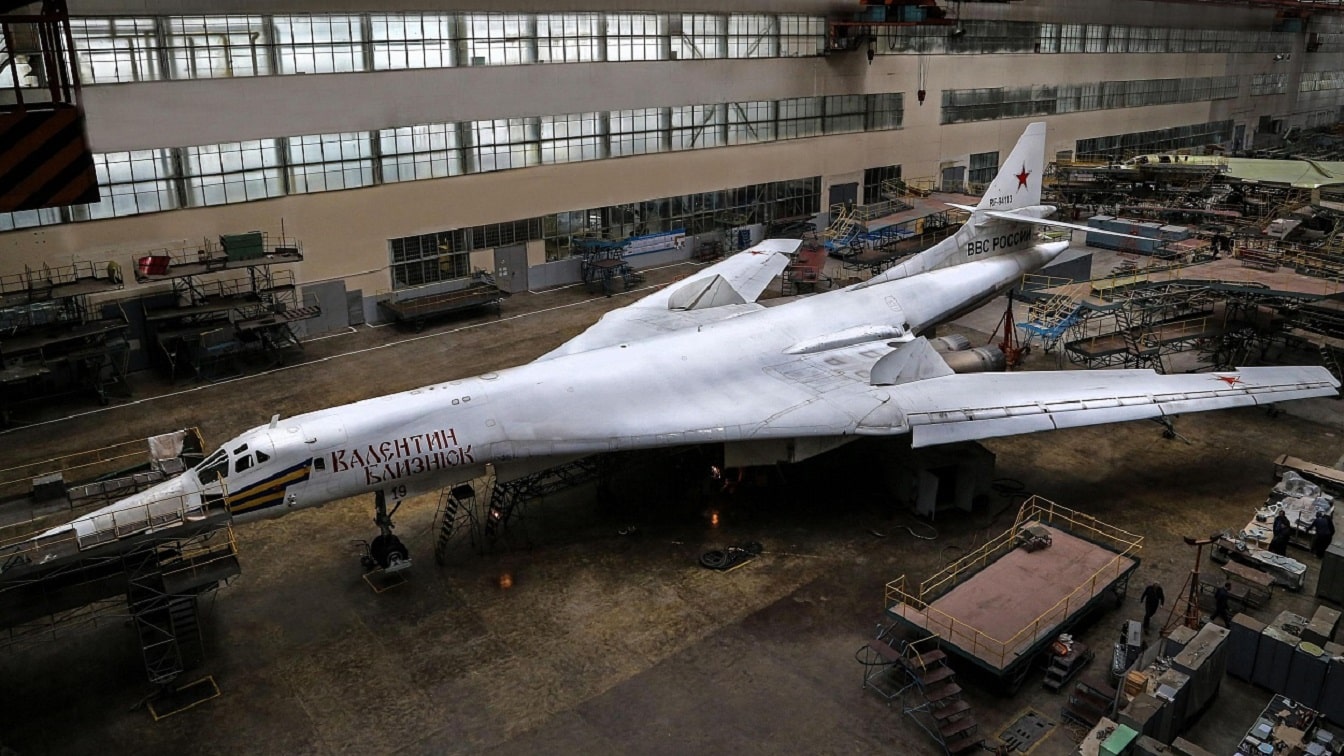The looming conflict between Russia and Ukraine has begun to dominate the world’s attention, to say nothing of the community of analysts who follow Russian military affairs. But the immediate problem of Russia’s designs on Ukraine shouldn’t obscure long-term trends in Russia’s military development.
On this score, Russia’s success in re-opening the production line for one of its most sophisticated strategic bombers surely deserves some attention. Earlier this month, the first new Tu-160 Blackjack took flight.

Tu-160. Image Credit: Creative Commons.
Russia’s Tu-160 Blackjack Bomber Is Back…and Brand New?
The Tu-160 is a late Cold War Soviet strategic bomber with a cursory visual resemblance to the Rockwell B-1B Lancer bomber. Some 36 of the aircraft were built during the initial production run, but many of those have been scrapped. The Blackjack can exceed Mach 2 and carry some 100000 of ordnance, almost always in the form of cruise missiles. Some Western analysts argued that some design elements of the Tu-160 borrowed liberally from the Rockwell B-1B strategic bomber, but the most persuasive evidence suggests parallel development rather than a direct copying.
The decision to restart the Tu-160 line was driven by a perception that Russia did not possess enough fast, long-range bombers. The operational fleet has hovered in the low double digits over the last decade, but the Russians have figured out how to use the Blackjack for strategic messaging purposes (visiting Venezuela and bombing Syria), and as a test-bed for new systems. Options for acquisition from other countries simply weren’t available, because no one else build long-range supersonic bombers. Finally and perhaps most importantly, Russia’s effort at developing a stealth bomber has seen significant delays.
It’s unclear exactly how different the new Blackjacks will be from their older kin. To be sure, the new Tu-160s won’t be exactly the same as the old ones. They’ll have better engines, in the future the capability to operate more advanced missiles, and presumably have a new electronics suite. The new planes will have also have a new mission. During the Wars on Terror, the United States discovered that the B-52 and the B-1B could be used for many purposes other than strategic nuclear deterrence.
Indeed, the B-1B is no longer capable of carrying out that mission at all. The first combat use of the Blackjack came during Russia’s intervention in the Syrian Civil War, where Tu-160s launched cruise missiles at range against opposition targets. Ironically, the Blackjacks operated alongside American B-1Bs, striking small groups of insurgents in a mission that was a far cry from delivering a nuclear apocalypse.

Tu-160 Bomber. Image Credit: Russian Government.
It is extremely unusual to restart an aircraft production line after a gap of twenty years. Machine tools have been lost; facilities have fallen into disrepair. The expert workforce has moved on to other things, retired, or died. As the US has discovered with the F-22, restarting an old line is often as difficult as developing an entirely new aircraft. Moreover, the Tu-160 production line hasn’t, unlike the F-15, enjoyed a generation of foreign sales to keep techniques modern. Supply chains are sometimes now in an inconveniently foreign country. Indeed, the re-establishment of the supply chain in 2015 required Russia to develop substitutes and workarounds for the components (mostly steering-related) that were produced by Ukraine’s aerospace industry.
Ukraine’s part of the story of the Blackjack involves more than just steering components. A squadron of Tu-160s came into the possession of Ukraine upon the collapse of the Soviet Union, but Ukraine lacked the funds to fly or maintain the bombers. After an abortive effort by the United States to buy three of the bombers and convert them into space launch platforms, Ukraine eventually transferred eight to Russia, where they were eventually refurbished and put back into service. The rest were scrapped or donated.

Tu-160 Bomber. Image Credit: Russian Government.
Thus, just as it reaches the brink with Ukraine, Russia continues to invest in its long-range strategic bomber force. It is not at all clear how Tu-160s would become involved in a war with Ukraine, but given the size of the Russian investment and the fact that they were used in somewhat less compelling strategic circumstances in Syria, it’s a good bet we’ll see the bombers launching long-range cruise missiles against targets in the theater. The more difficult question might be “where will we see the Blackjack next?”
Now a 1945 Contributing Editor, Dr. Robert Farley is a Senior Lecturer at the Patterson School at the University of Kentucky. Dr. Farley is the author of Grounded: The Case for Abolishing the United States Air Force (University Press of Kentucky, 2014), the Battleship Book (Wildside, 2016), and Patents for Power: Intellectual Property Law and the Diffusion of Military Technology (University of Chicago, 2020).
Want more 19FortyFive military, defense, and national security, as well as politics and economics analysis from the best experts on Earth? Follow us on Google News, Flipboard, YouTube, Facebook, Twitter, and Linkedin. Also, sign up for our newsletter here. You can also find our code of publishing ethics and standards here. Want to contact us? Email: [email protected].

